Jianglin Lu
Scale-Free Graph-Language Models
Feb 21, 2025Abstract:Graph-language models (GLMs) have demonstrated great potential in graph-based semi-supervised learning. A typical GLM consists of two key stages: graph generation and text embedding, which are usually implemented by inferring a latent graph and finetuning a language model (LM), respectively. However, the former often relies on artificial assumptions about the underlying edge distribution, while the latter requires extensive data annotations. To tackle these challenges, this paper introduces a novel GLM that integrates graph generation and text embedding within a unified framework. Specifically, for graph generation, we leverage an inherent characteristic of real edge distribution--the scale-free property--as a structural prior. We unexpectedly find that this natural property can be effectively approximated by a simple k-nearest neighbor (KNN) graph. For text embedding, we develop a graph-based pseudo-labeler that utilizes scale-free graphs to provide complementary supervision for improved LM finetuning. Extensive experiments on representative datasets validate our findings on the scale-free structural approximation of KNN graphs and demonstrate the effectiveness of integrating graph generation and text embedding with a real structural prior. Our code is available at https://github.com/Jianglin954/SFGL.
Latent Graph Inference with Limited Supervision
Oct 06, 2023Abstract:Latent graph inference (LGI) aims to jointly learn the underlying graph structure and node representations from data features. However, existing LGI methods commonly suffer from the issue of supervision starvation, where massive edge weights are learned without semantic supervision and do not contribute to the training loss. Consequently, these supervision-starved weights, which may determine the predictions of testing samples, cannot be semantically optimal, resulting in poor generalization. In this paper, we observe that this issue is actually caused by the graph sparsification operation, which severely destroys the important connections established between pivotal nodes and labeled ones. To address this, we propose to restore the corrupted affinities and replenish the missed supervision for better LGI. The key challenge then lies in identifying the critical nodes and recovering the corrupted affinities. We begin by defining the pivotal nodes as $k$-hop starved nodes, which can be identified based on a given adjacency matrix. Considering the high computational burden, we further present a more efficient alternative inspired by CUR matrix decomposition. Subsequently, we eliminate the starved nodes by reconstructing the destroyed connections. Extensive experiments on representative benchmarks demonstrate that reducing the starved nodes consistently improves the performance of state-of-the-art LGI methods, especially under extremely limited supervision (6.12% improvement on Pubmed with a labeling rate of only 0.3%).
Asymmetric Transfer Hashing with Adaptive Bipartite Graph Learning
Jun 25, 2022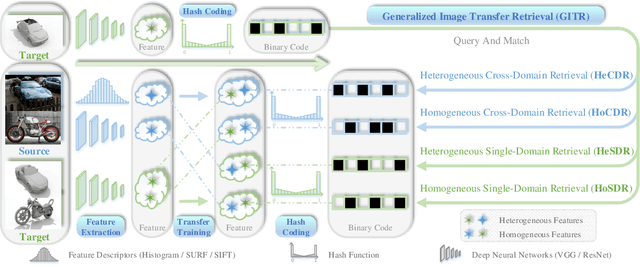
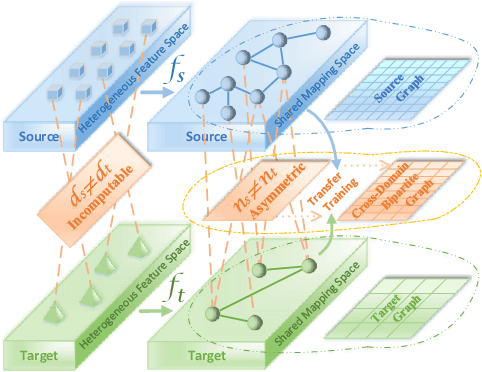


Abstract:Thanks to the efficient retrieval speed and low storage consumption, learning to hash has been widely used in visual retrieval tasks. However, existing hashing methods assume that the query and retrieval samples lie in homogeneous feature space within the same domain. As a result, they cannot be directly applied to heterogeneous cross-domain retrieval. In this paper, we propose a Generalized Image Transfer Retrieval (GITR) problem, which encounters two crucial bottlenecks: 1) the query and retrieval samples may come from different domains, leading to an inevitable {domain distribution gap}; 2) the features of the two domains may be heterogeneous or misaligned, bringing up an additional {feature gap}. To address the GITR problem, we propose an Asymmetric Transfer Hashing (ATH) framework with its unsupervised/semi-supervised/supervised realizations. Specifically, ATH characterizes the domain distribution gap by the discrepancy between two asymmetric hash functions, and minimizes the feature gap with the help of a novel adaptive bipartite graph constructed on cross-domain data. By jointly optimizing asymmetric hash functions and the bipartite graph, not only can knowledge transfer be achieved but information loss caused by feature alignment can also be avoided. Meanwhile, to alleviate negative transfer, the intrinsic geometrical structure of single-domain data is preserved by involving a domain affinity graph. Extensive experiments on both single-domain and cross-domain benchmarks under different GITR subtasks indicate the superiority of our ATH method in comparison with the state-of-the-art hashing methods.
Deep Asymmetric Hashing with Dual Semantic Regression and Class Structure Quantization
Oct 24, 2021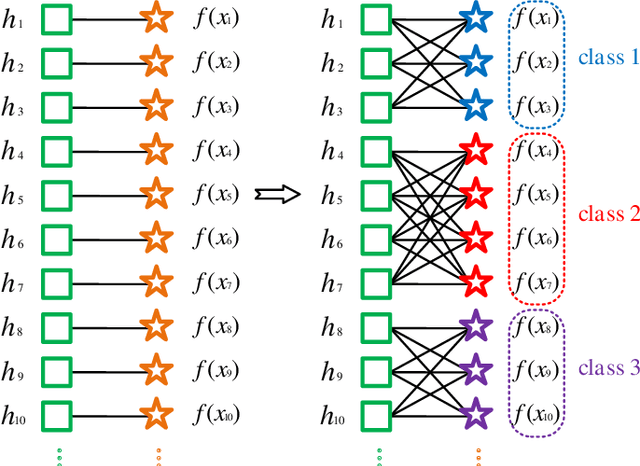
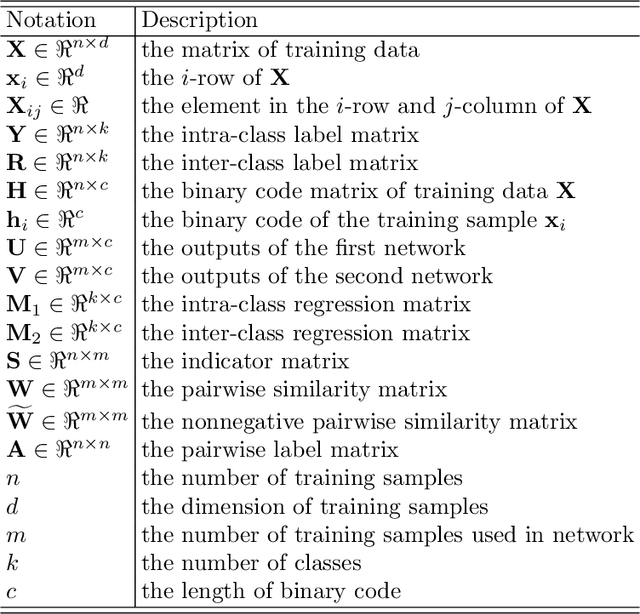
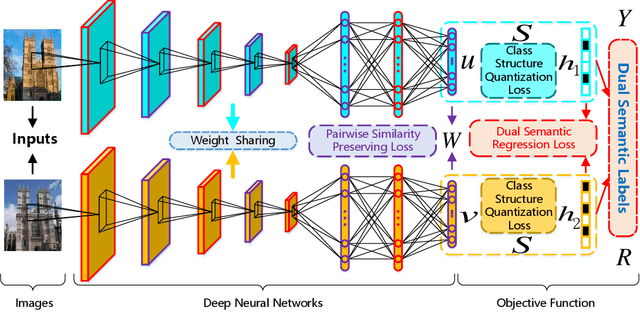
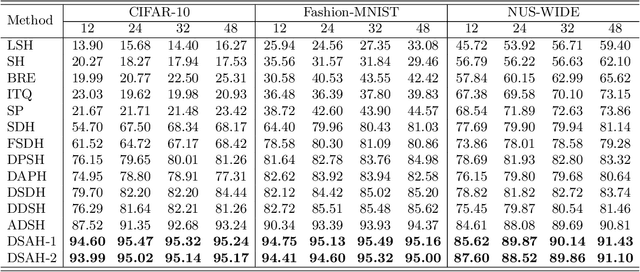
Abstract:Recently, deep hashing methods have been widely used in image retrieval task. Most existing deep hashing approaches adopt one-to-one quantization to reduce information loss. However, such class-unrelated quantization cannot give discriminative feedback for network training. In addition, these methods only utilize single label to integrate supervision information of data for hashing function learning, which may result in inferior network generalization performance and relatively low-quality hash codes since the inter-class information of data is totally ignored. In this paper, we propose a dual semantic asymmetric hashing (DSAH) method, which generates discriminative hash codes under three-fold constrains. Firstly, DSAH utilizes class prior to conduct class structure quantization so as to transmit class information during the quantization process. Secondly, a simple yet effective label mechanism is designed to characterize both the intra-class compactness and inter-class separability of data, thereby achieving semantic-sensitive binary code learning. Finally, a meaningful pairwise similarity preserving loss is devised to minimize the distances between class-related network outputs based on an affinity graph. With these three main components, high-quality hash codes can be generated through network. Extensive experiments conducted on various datasets demonstrate the superiority of DSAH in comparison with state-of-the-art deep hashing methods.
Deep Superpixel Cut for Unsupervised Image Segmentation
Mar 10, 2021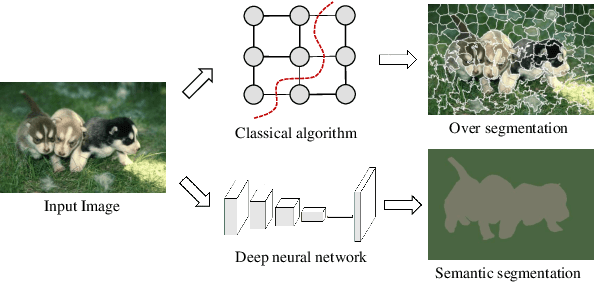
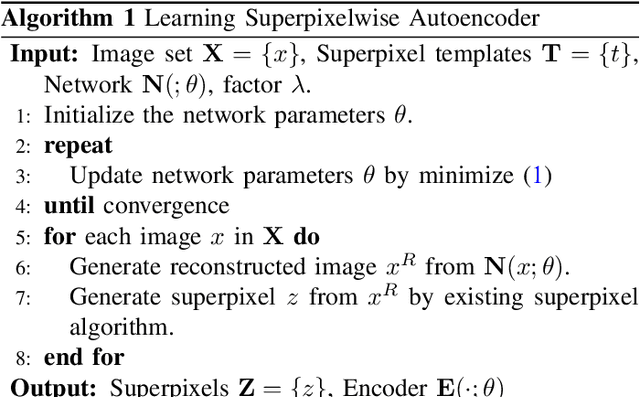
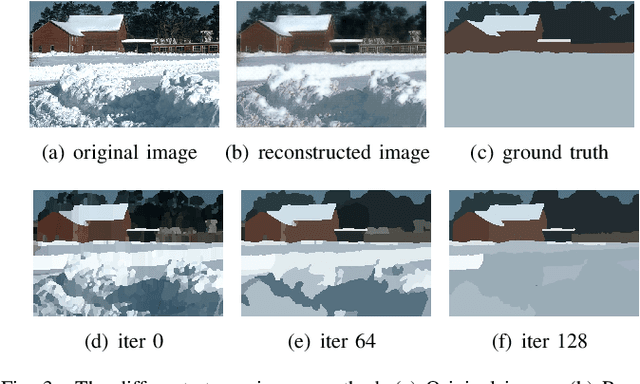
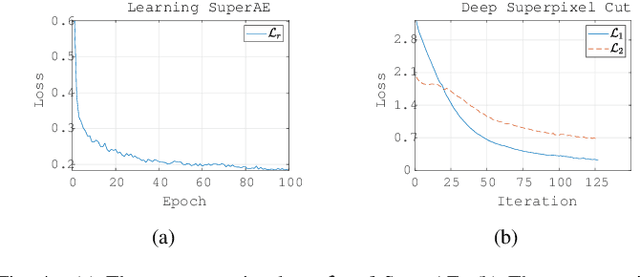
Abstract:Image segmentation, one of the most critical vision tasks, has been studied for many years. Most of the early algorithms are unsupervised methods, which use hand-crafted features to divide the image into many regions. Recently, owing to the great success of deep learning technology, CNNs based methods show superior performance in image segmentation. However, these methods rely on a large number of human annotations, which are expensive to collect. In this paper, we propose a deep unsupervised method for image segmentation, which contains the following two stages. First, a Superpixelwise Autoencoder (SuperAE) is designed to learn the deep embedding and reconstruct a smoothed image, then the smoothed image is passed to generate superpixels. Second, we present a novel clustering algorithm called Deep Superpixel Cut (DSC), which measures the deep similarity between superpixels and formulates image segmentation as a soft partitioning problem. Via backpropagation, DSC adaptively partitions the superpixels into perceptual regions. Experimental results on the BSDS500 dataset demonstrate the effectiveness of the proposed method.
 Add to Chrome
Add to Chrome Add to Firefox
Add to Firefox Add to Edge
Add to Edge